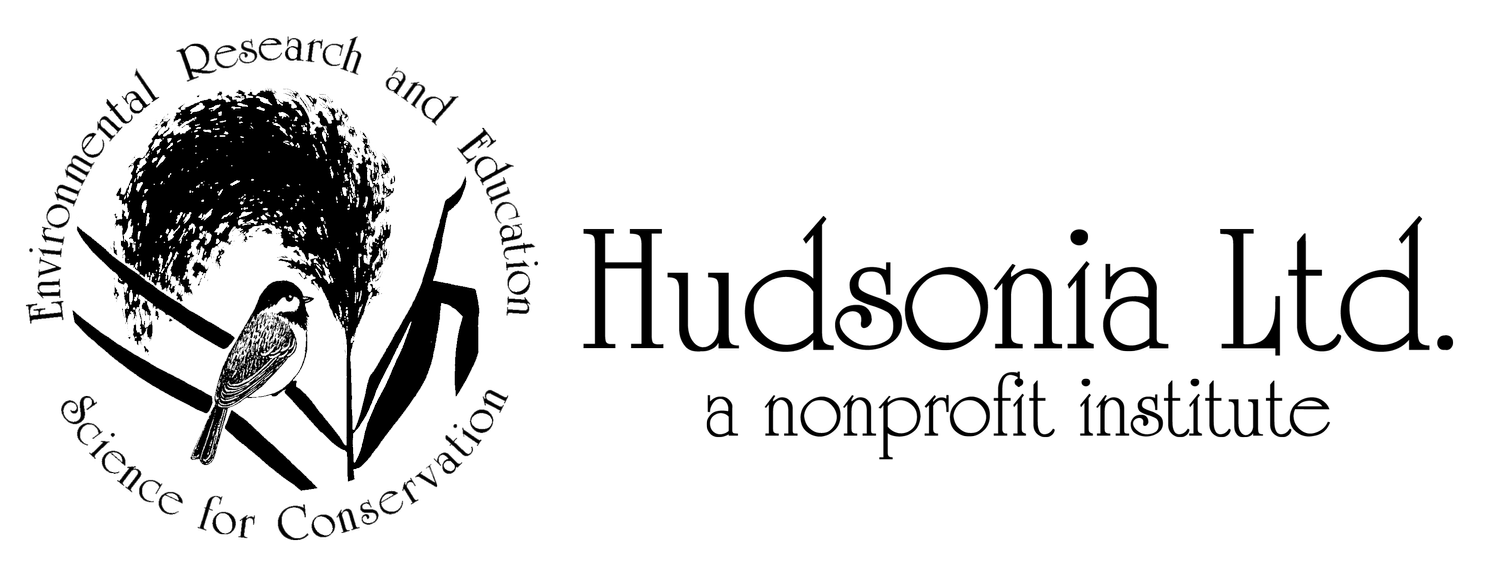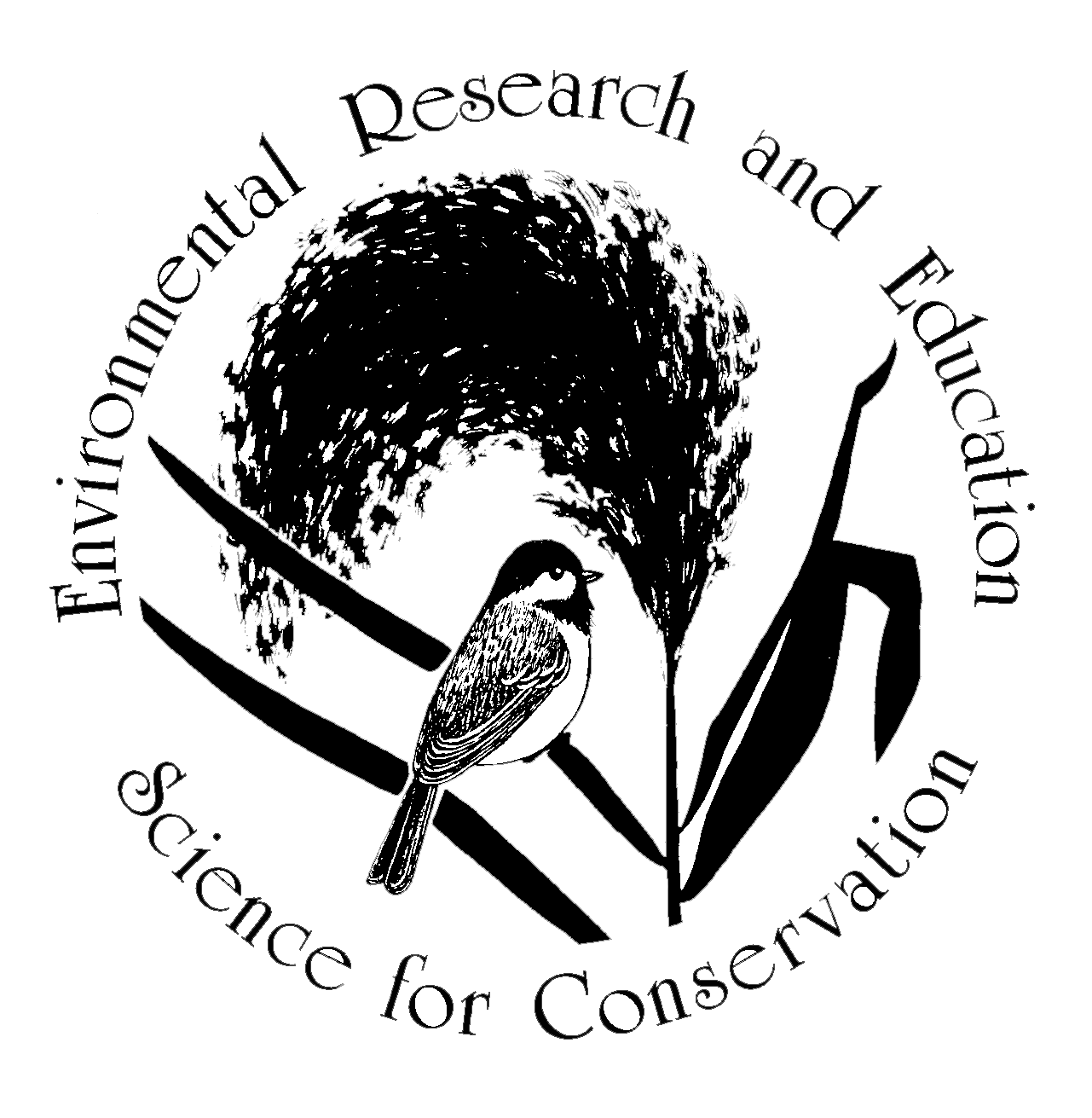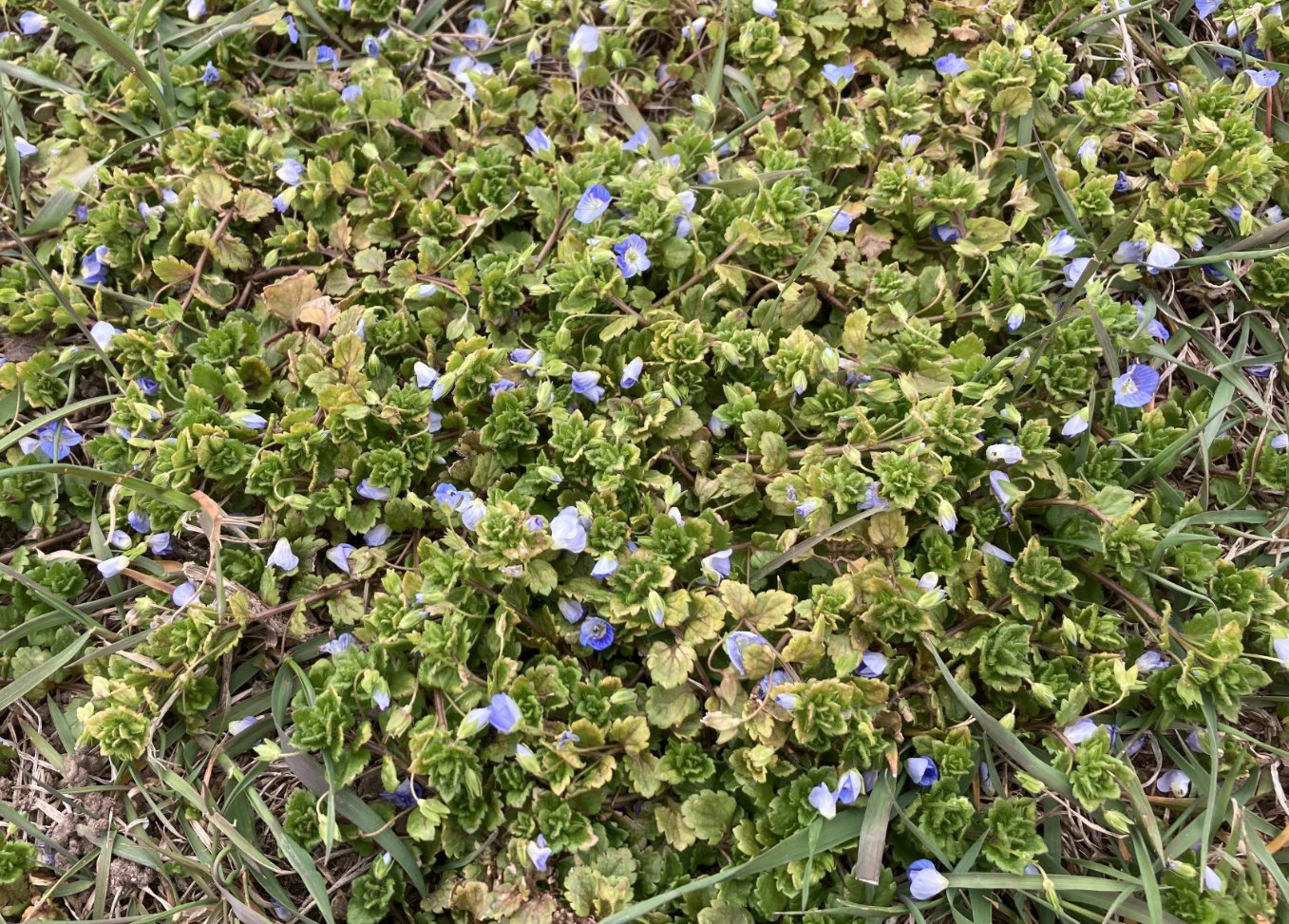Spring Well, Speedwell
A Guide to the Spring Veronicas of New York’s Roadsides, Lawns, and Fields
by Christopher Graham
This article originally appeared in the Spring 2024 (Volume 35 Issue 2) of Mitchelliana, newsletter of the New York Flora Association
As a resident of a small urban heat island, the City of Kingston in the mid-Hudson Valley, I see the earliest blooming wildflowers a bit earlier each year than folks who live in rural areas. By late March in most years (and even earlier this year), I see species such as Cardamine hirsuta, Draba verna, Lamium purpureum, and Stellaria media begin to dot the neighborhood lawns, gardens, and sidewalk cracks with flecks of color and white.
Figure 1. A tangled mat of creeping Veronica persica, a common habit of our urban-suburban, spring-flowering speedwells.
Among the earliest of urban and suburban wildflowers, and perhaps as dominant as any other genus of urban wildflowers in my area (both by cover and number of species), are the speedwells (Veronica spp.). I had long looked askance at these plants as too “weedy” and abstruse to bother with unless I happened to encounter one in a work project that required identification, a rare enough occurrence that I could get away with such callousness. It’s not that I disapproved of them, per say—but who had the time when so many native vascular plants of more wild habitats beckoned to be studied?
A few years ago, I began taking a closer look at many of our urban wildflowers through a camera lens. In doing so, I came to realize that, while these little plants may be weedy and mostly non-native, they are lovely, interesting, and well worth getting to know—plus, learning them made me a (slightly!) better botanist.
This article covers common urban and ruderal Veronica species that begin flowering in the spring (March-May), although the genus does include many other species in New York. The New York Flora Atlas (Werier et al. 2024) lists 26 unique Veronica taxa—24 species, two of which have two subspecies. Five are obligate wetland species and are not considered here. Also omitted are 6 species that are not naturalized or are of unknown naturalized status; two naturalized species that have very limited distributions in New York; one common species (V. longifolia) of fields and roadsides that begins flowering later (June); and one native subspecies that occurred historically in New York but has not been found in recent years.
The Veronica ’s are herbaceous, annual or perennial Eudicots in the Plantaginaceae (plantain family), formerly of the Scrophulariaceae (figwort family). The flowers are bisexual, hypogynous, slightly irregular, and bilaterally symmetric. The sympetalous corollas have (usually) four lobes (the “petals”) of unequal sizes, much longer than the tube, and are various shades of blue, violet, white, and pink, often with different-colored centers and/or darker veins. The calyx is four-parted (the “sepals”), the stamens two, and the pistil bicarpellate with a single style and stigma. Fruits are two-parted, heart- or pumpkin-shaped capsules tipped with the persistent style. The stem leaves are simple and opposite, while the inflorescence bracts are alternate.
Some notes on field identification. As with any field identification, it’s best to look at several plants in a population when making a determination. Several species are creeping or prostrate and often form dense, ground-hugging mats (Figure 1). Plants in such a patch may appear alternate-leaved because the oppositely-arranged stem leaves are hidden beneath the long, indeterminate racemes with their alternate, foliaceous (leafy)-bracted flowers. Plants may be stunted by repeated mowing. Pedicel (flower stalk) length is important for identification of several species and should be measured when in fruit; pedicels often elongate considerably prior to fruiting. Approximate flowering periods given below are for the mid-Hudson Valley.
The following key and notes on species are based on Haines (2011), Rhoads and Block (2000), Gleason and Cronquist (1991), Weakley et al. (2022), Flora of North America (Albach 1993+), and the author’s observations. Names follow Werier et al. (2024).
Selected notes on species, with photos.
V. officinalis—common speedwell. Non-native, decumbent perennial of woods, oldfields, and roadsides. Found in woods more often than other species in this key. Begins flowering mid- to late May.
V. chamaedrys—germander speedwell. Non-native, prostrate or loosely ascending perennial of fields, roadsides, lawns, and woods. Begins flowering late April to early May.
V. peregrina ssp. peregrina—purslane speedwell. Native, upright, glabrous annual of gardens, moist lawns, alluvial ground, and other moist places. Begins flowering mid-April.
V. peregrina ssp. xalapensis—glandular speedwell (not pictured). Native, less common subspecies listed as S3/Rare in New York.
V. serpyllifolia ssp. serpyllifolia—common thyme-leaved speedwell. Non-native, creeping or ascending perennial of lawns, fields, and open woods. Begins flowering mid-April. A native subspecies (V. serpyllifolia ssp. humifusa), listed as SH-historical in New York, is not included in the key.
V. arvensis—corn speedwell. Non-native, weakly erect annual of gardens, lawns, fields, and woods. Begins flowering mid-April.
V. sublobata—pink ivy-leaved speedwell. Non-native, decumbent to ascending annual of moist and shady lawns, gardens, thickets, and forests. An often overlooked species recently recognized to be naturalized in New York, likely more common and widespread than realized (Atha et al. 2021). Begins flowering March. Note the compound lobing of one of the pictured flowers. Are such “sublobes” the source of the specific epithet?
V. hederifolia—ivy-leaved speedwell. Non-native, trailing or weakly ascending annual of lawns, roadsides, moist fields, and open woods. Begins flowering March.
V. filiformis—thread-stalked speedwell. Non-native, creeping perennial of lawns and fields. Begins flowering mid-April.
V. persica—Persian speedwell. Non-native, creeping or weakly ascending annual of lawns, gardens, fields, and roadsides. Begins flowering March.
V. polita—gray field speedwell. Non-native, prostrate or ascending annual of lawns, gardens, fields, and roadsides. Begins flowering March.
Because of their ubiquity and diversity and the ease of recognizing the genus, the speedwells make an excellent, and fun, group of wildflowers to practice working through a key or using a field guide on, in addition to generally honing your eye for taxonomic detail. Besides which, several species have not been confirmed as naturalizing but may just be doing so under our noses, and others may be more widespread than the very limited ranges we’re aware of: so if you keep your eyes on your neighborhood’s lawns, neglected gardens and fields, sidewalk cracks, and even flower pots, and you may make an important addition to our knowledge of New York’s wild Veronica’s.
References Cited
Albach, D.C. Veronica. In: Flora of North America Editorial Committee, eds. 1993+. Flora of North America North of Mexico [Online]. 25+ vols. New York and Oxford. Vol. 17. http://floranorthamerica.org/Veronica. Accessed 2 April 2024.
Atha, D., L. Lewis, S. Wolkenberg, D. Werier, and D.C. Albach. 2021. First report of Veronica sublobata (Plantaginaceae) for New York. Phytoneuron 2021-27: 1–5.
Gleason, H.A. and A. Cronquist. 1991. Manual of the Vascular Plants of Northeastern United States and Adjacent Canada, 2nd Ed. The New York Botanical Garden: Bronx, NY.
Haines, A. 2011. New England Wild Flower Society's Flora Novae Angliae: A Manual for the Identification of Native and Naturalized Higher Vascular Plants of New England. Yale University Press: New Haven, CT.
Rhoads, A.F. and T.A. Block. 2000. The Plants of Pennsylvania: An Illustrated Manual, 1st Ed. University of Pennsylvania Press: Philadelphia.
Weakley, A.S. and the Southeastern Flora Team. 2022. Flora of the Southeastern United States: New York. University of North Carolina Herbarium, North Carolina Botanical Garden.
Werier, D., K. Webster, T. Weldy, A. Nelson, R. Mitchell, and R. Ingalls. 2024. New York Flora Atlas. [S. M. Landry and K. N. Campbell (original application development), USF Water Institute. University of South Florida]. New York Flora Association, Albany, New York.





